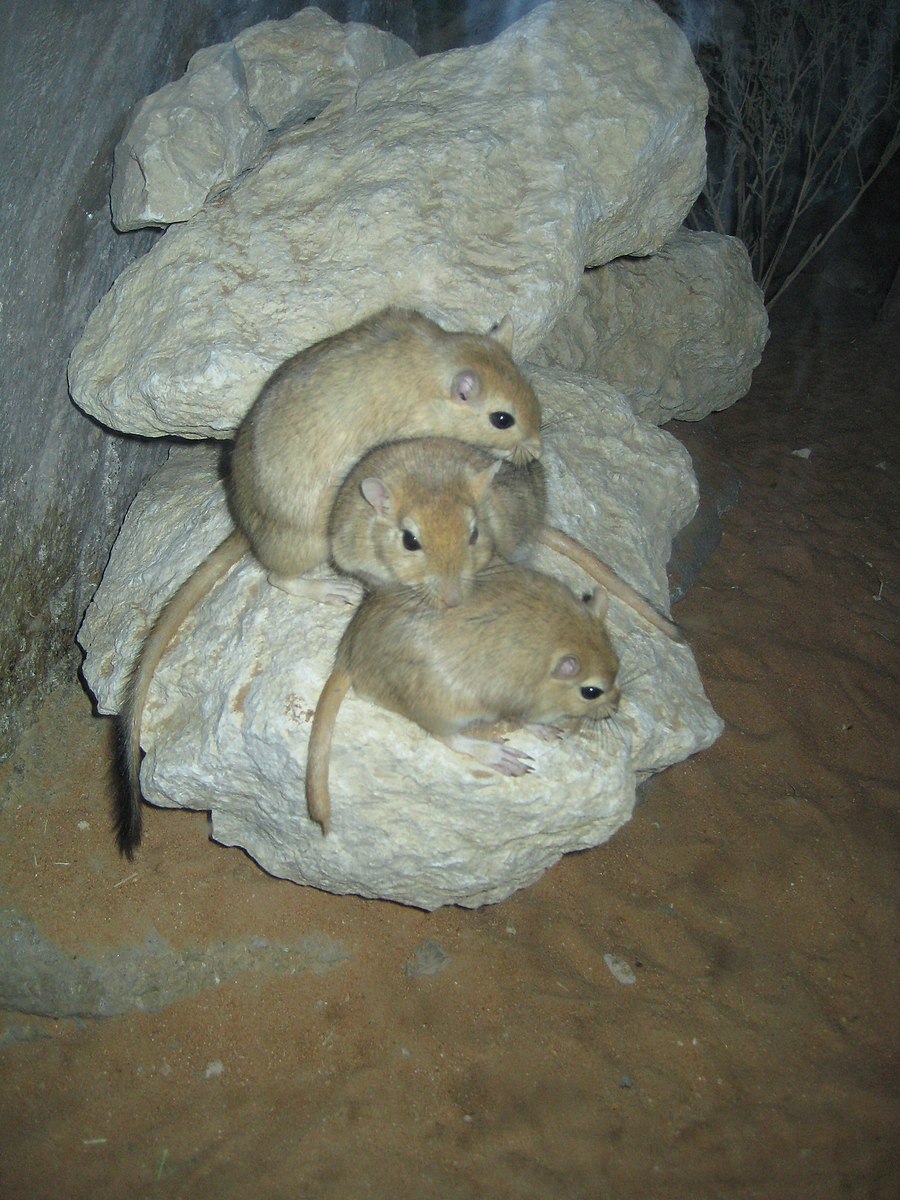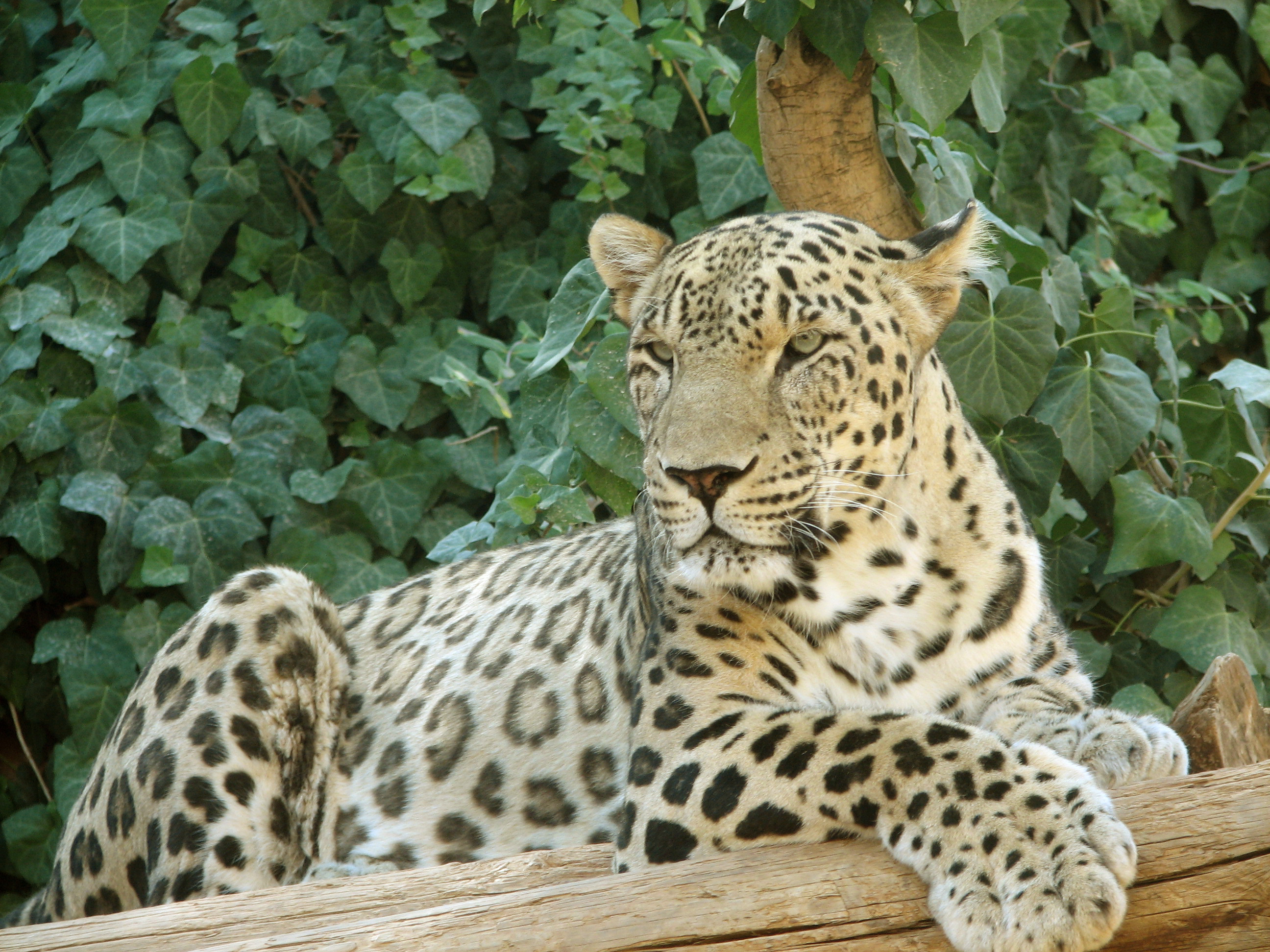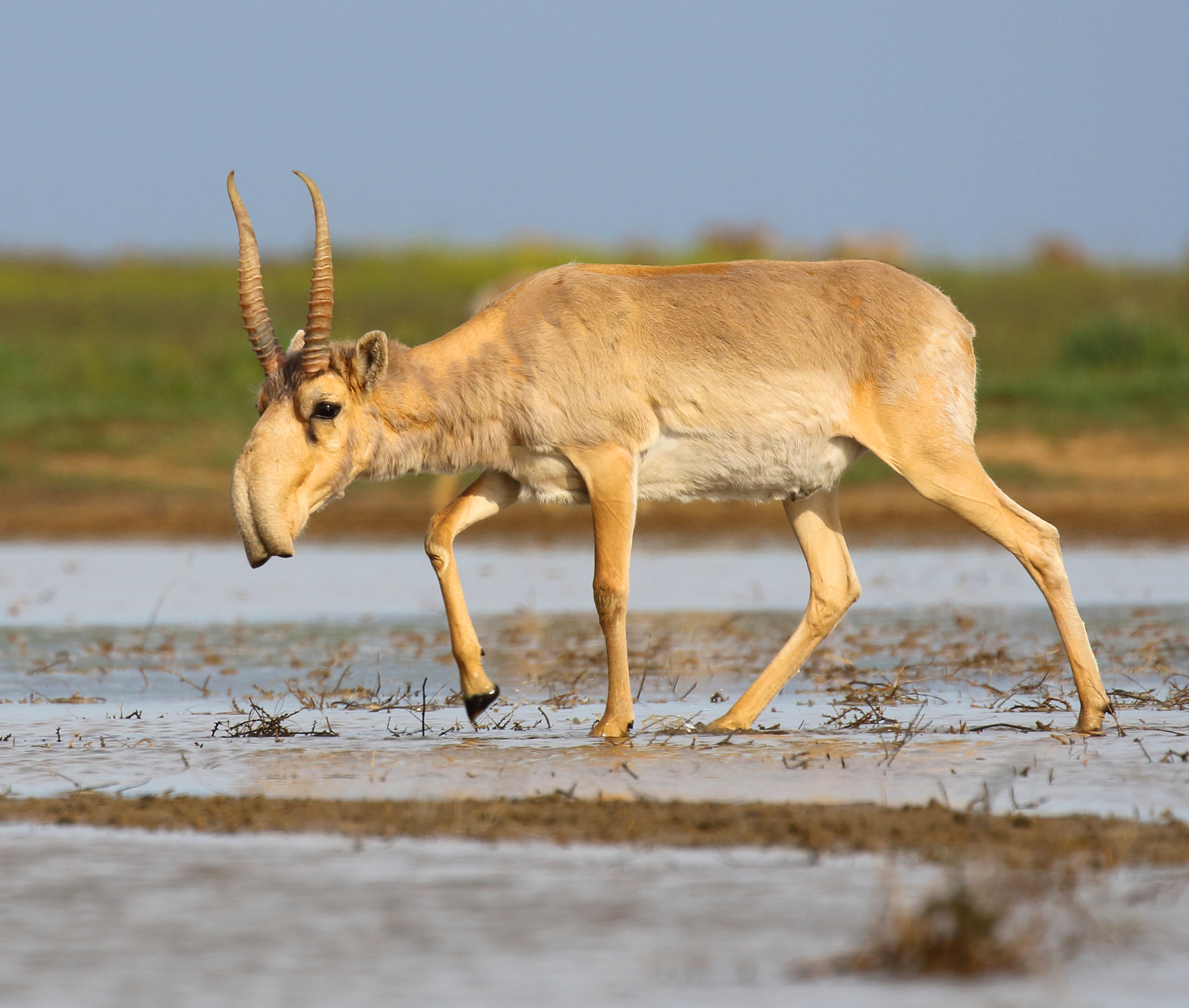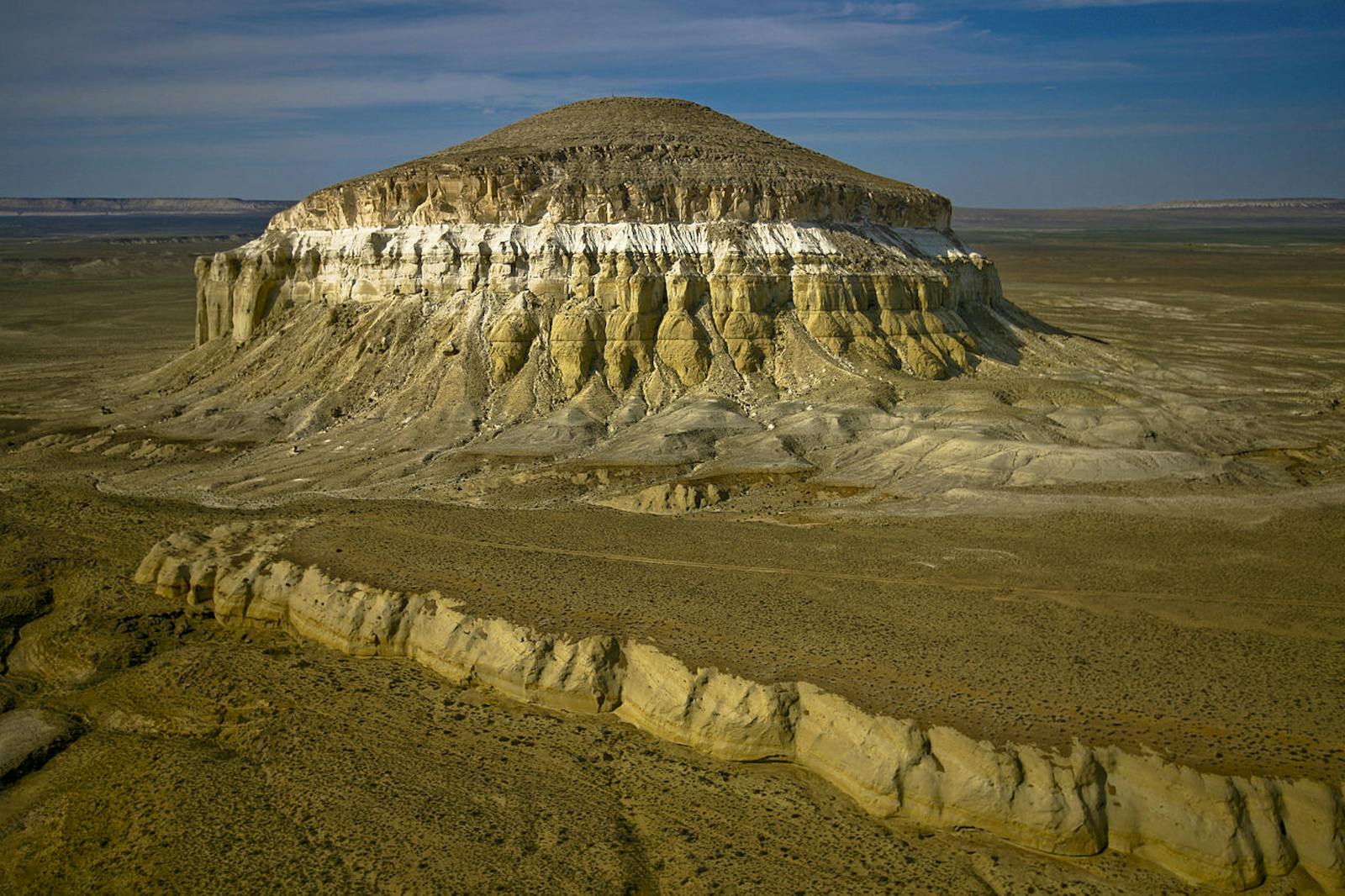Central Asian Northern Desert
The ecoregion’s land area is provided in units of 1,000 hectares. The conservation target is the Global Safety Net (GSN1) area for the given ecoregion. The protection level indicates the percentage of the GSN goal that is currently protected on a scale of 0-10. N/A means data is not available at this time.
Bioregion: Central Asian Deserts & Riparian Woodlands (PA32)
Realm: Central Eurasia
Ecoregion Size (1000 ha):
66,390
Ecoregion ID:
817
Conservation Target:
65%
Protection Level:
0
States: Kazakhstan, Uzbekistan, Kyrgyzstan, Turkmenistan
The ecoregion consists of a varied landscape with low plains close to the Caspian Sea, desert clay plateaus, and hilly peneplains. The vegetation here is dominated by sagebrush and perennial halophytes, capable of enduring the extreme temperatures and salty soil. The fauna also has to be very adapted and many, such as desert dormouse, are nocturnal. There are also important populations of the critically endangered saiga antelope.

The flagship species of the Central Asian Northern Desert ecoregion is the desert dormouse. Image credit: Creative Commons
This ecoregion has an area of 663,900 km2, covering disjunct areas mainly in Kazakhstan and Uzbekistan, with small parts in Kyrgyzstan and Turkmenistan. It includes the Mangyshalak Peninsula in Western Kazakhstan, the Central portion of the Ustyurt Plateau, and a portion of land in the south Aral Sea stretching east through the Kzylorda and Jambyl Provinces in Kazakhstan, encompassing southern and northern Lake Balkhash.
The dominant vegetation is perennial saltworts, shrubs, and semi-shrubs with a dominance of sagebrush and perennial halophytes. The average temperature in this desert region is 9.5°C. The maximum average is 32.2°C and the minimum average is -15.7°C. The average precipitation is 166.9 mm/year. The prevailing climate is a cold desert, with hot/warm summers. Closer to the Tien Shan mountain range, the climate is semi-arid as well.
Endemic to Kazakhstan and practically limited to this ecoregion is the desert dormouse. This species inhabits the rubbly, clay, and saline deserts where wormwood and saltworts are dominant. Due to the extraction of shrubs, it is suffering from habitat loss and also habitat degradation due to livestock farming. Also endemic is the pale pygmy jerboa and Heptner's pygmy jerboa, similarly under threat due to degradation of habitat. Popualations of critically endangered vertebrates including sociable lapwing, the southern even-fingered gecko, and saiga antelope.
Saiga populations can be found in the Ustyurt and Betpak-Dala regions in Kazakstan. The saiga is hunted for meat, and its horns are illegally traded and used in traditional Chinese medicine. Its populations have also been severely affected by a bacterial disease, possibly triggered by unusual weather patterns. Also worth mentioning are the vulnerable steppe eagle, Saker falcon, Palla's fish-eagle, Egyptian vulture, and white-headed duck.

Persian leopard. Image credit: Tamar Assaf, Creative Commons
Thirteen protected areas intersect with this ecoregion, all in Kazakhstan: Aktay-Buzachinskiy Zakaznik, Kenderli-Kajasanskaya State Natural Protected Zone, Karagye-Karakolskiy Zakznik, Mangyshlakskiy Experimental Botanical Garden, Ustyurt State Nature Reserve, Iliiskaja delta Zkaznik, Barsakel'messkiy State Reserve, Andasayskiy Zakaznik, Pribalkhashskiy Zakaznik, Karoiskiy Zakaznik, Kukanskiy Zakaznik, and Altyn Emel National Nature Park. The Ustyurt State Nature Reserve is a category 1a strict nature reserve located in the Mangystau region on the Ustyurt Plateau, providing habitat to a variety of animals such as mouflon and Persian gazelle. Recently, the Persian leopard was observed in this protected area.
The Altyn Emel National Nature Park, a category II protected area, is Kazakhstan biggest reserve with 4,600 km2, lying in between the Ili River and the Ak-Tau mountain range, near Lake Kapchagai. It is mostly covered by desert and rocky terrain and has a significant role in the conservation of the vulnerable goitered gazelle. This protected area is also classified as an Important Biodiversity Area (IBA). It hosts a variety of desert, dry, rocky mountain and wetland birds with some 280 species being observed there, including up to 160 breeding species, like the endangered Saker falcon.
Another notable Important Biodiversity Area is the Donyz-Tau cliff faces area, which is classified as an "IBA in danger" due to the trapping of the Saker Falcon by international traders. This activity also disturbs other breeding species that live here. This ecoregion is remarkably intact, with a core area of over 450,000 km2. Population density is very low, with an average of 0.02 inhabitants per hectare. More than 84% of the ecoregion is desert, with less than 3% used as cropland.

Saiga antelope. Image credit: Andrey Giljov, Creative Commons
A major threat in this ecoregion is the poaching of Saiga, which is especially severe in some regions like the Ustyurt Plateau in Kazakhstan and Uzbekistan. In the western area that surrounds the Aral Sea, diversion of water for irrigation is acute, especially for cotton crops. High levels of pesticide and chemical fertilizer has also accumulated in this area because of these crops.
The priority conservation actions for the next decade will be to: 1) strengthen the combat of illegal trade of the saiga horns; 2) support awareness campaigns on the causes of the drying of the Aral Sea; and 3) enhance protected areas estate with the implementing of proposed areas and creation of more strictly protected ones.
Citation
- The Fifth National Report on progress in implementation of the Convention on Biological Diversity. 2014. Ministry of Environment and Water Resource of the Republic of Kazakhstan.
- Milner‐Gulland, E.J. and Singh, N.J. 2016. Two Decades of Saiga Antelope Research: What have we Learnt?. Antelope Conservation: From Diagnosis to Action. (16), p.297.
- Pestov, M.V., Nurmukhambetov, Z.E., Mukhashov, A.T., Terentyev, V.A. and Rosen, T. 2019. First camera trap record of Persian leopard in Ustyurt State Nature Reserve, Kazakhstan. Cat News, 68. Pp 14-16.

.png?auto=compress%2Cformat&w=300)

